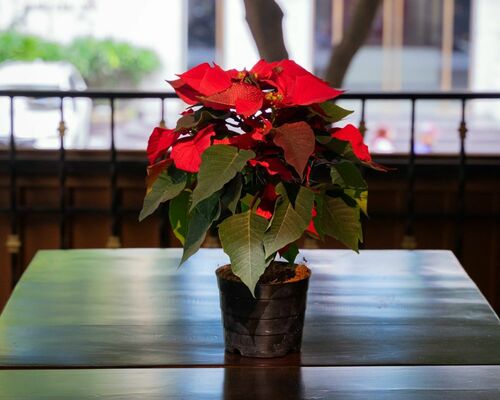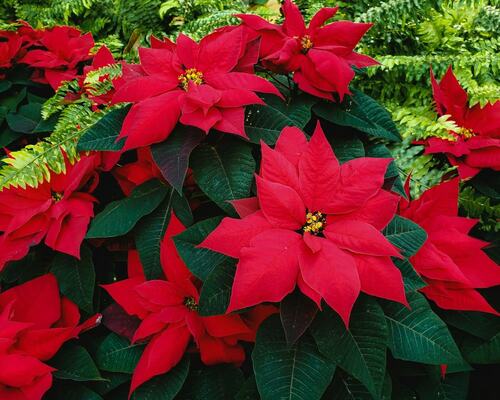Caring for Poinsettias after the Holidays
Introduction
Is the poinsettia you received over the holidays still hanging on, perhaps a bit faded but alive? As the festive season ends, you may wonder what to do with this vibrant plant. Should you keep it, or is it time to let it go? With proper care, your poinsettia can thrive well beyond the holiday season, providing perennial color and life year after year. Here’s how to care for your poinsettia after Christmas to ensure its longevity.
Keeping Poinsettias All Year

A Poinsettia Covered in Water Droplets – Photo by Hiếu Hoàng
Who doesn’t love the poinsettia ? With its bright-red bracts and deep green foliage, it’s a symbol of holiday cheer. But once the decorations come down, the question arises—should you keep the plant or toss it?
While many people choose to dispose of their poinsettias, they can be kept and cared for throughout the year with the right attention. If you’re up for the challenge, caring for a poinsettia after Christmas is not only possible but also rewarding.
How to Care for a Poinsettia

A Poinsettia Sits on an Outdoor Table – Photo by Irish83 on Unsplash
Proper poinsettia care starts with the right growing conditions. Place your poinsettia in a warm, sunny window, free from drafts, where it can receive at least six hours of bright, indirect sunlight daily. This light exposure is crucial for the plant’s health and continued growth.
To encourage repeated blooming, maintain daytime temperatures between 65°F and 70°F, with slightly cooler nights. However, keep the temperature above 60°F to prevent leaf drop. Continue watering regularly until early April, and then gradually reduce watering.
If the plant becomes leggy, trim the stems back to about four inches above the soil and repot in a larger container with fresh, sterile potting mix. Regular watering and attention will keep the plant thriving, and you can remove any faded or dried parts as needed.
Once new growth appears, feed the plant with an all-purpose houseplant fertilizer every couple of weeks. In early summer, when nighttime temperatures stay above 50°F, you can move the plant outdoors to a slightly shady location, gradually increasing its light exposure until it can handle full sun. Continue your watering and fertilizing routine to keep the plant healthy.
Pruning and Preparing for Next Season
In July, trim the poinsettia by pinching about an inch of terminal growth from each stem to encourage bushier growth. Another pruning session in early September, removing two to three inches from each stem and allowing three to four leaves to remain on each shoot, will promote side branching. As the weather cools in late September, bring the plant back indoors to a sunny window, maintaining temperatures between 65°F and 70°F.
The Reward: Holiday Blooms

Multiple Poinsettias in Full Bloom – Photo by Jeffrey Hamilton on Unsplash
The effort you put into caring for your poinsettia throughout the year pays off as the holiday season approaches. To encourage blooming, poinsettias require short day lengths. Starting in early October, place your poinsettia in complete darkness for twelve to fourteen hours every night, continuing this routine until Thanksgiving.
During the day, return it to its sunny spot for at least six hours of light. This cycle of darkness and light will trigger the formation of the plant’s colorful bracts, leading to a vibrant display just in time for Christmas.
By Thanksgiving, you can stop the nightly darkness routine, allowing the poinsettia to remain in a sunny location. Reduce watering and fertilizer during this period. With a bit of luck, your poinsettia will bloom beautifully, becoming a centerpiece of your holiday décor once again.
Conclusion
While there is no guarantee that your poinsettia will bloom again, even with the best care, the challenge is certainly worth the effort. Watching your poinsettia thrive and bloom for another season can be incredibly rewarding. Arborist Now hopes these tips help you care for your poinsettia year-round. For more guidance on indoor and outdoor gardening, feel free to contact us anytime.
Originally posted January 21, 2021.


